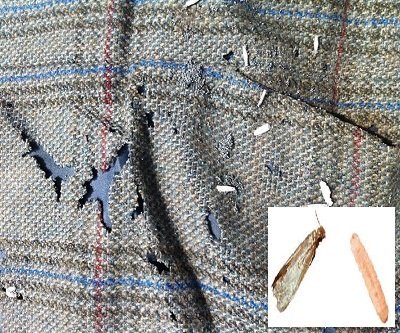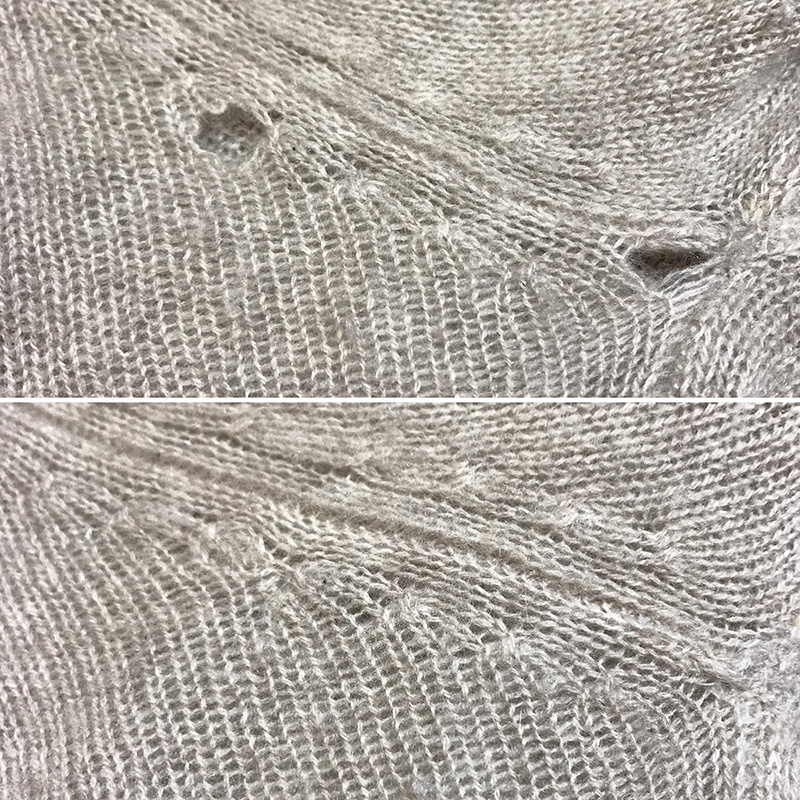It’s cold again, which means sweater weather! And holding your breath as you take your sweaters out of storage after a hot summer, praying that they survived the wrath of hungry moth larvae. Instead of crossing your fingers, use this guide to be proactive and never find holes in your favorite sweaters again!
We’ve found that the best way to fight moths is to outsmart them with these prevention methods: vacuum, launder, and store properly! If you do it right, the moths will never find your sweaters in the first place! Here’s how to keep your wools, silks, furs and feathers safe and hidden from the gnarly little creatures.
Rule number one is keeping your closet clean. Clothing moths hibernate in places that are dark and warm. Their favorite foods are wool, silk, fur, and feathers. They love the smell of human sweat and leftover food. Yum. Your winter sweaters sitting in the back of your closet or under your bed, undisturbed all summer, are basically an all-inclusive moth resort.

A periodic closet clean can prevent spa-like conditions for these sweater destroying pests. Thoroughly vacuum, especially in those hard to reach corners, and wipe down shelves with your favorite cleaning solution. Wash all of your clothes that can be washed and dry clean everything that needs to be dry cleaned before putting it away for the summer. Yes, this absolutely includes new-to-you vintage finds.
If you already have moths, or if neither cleaning method is an option, you can wrap garments in plastic bags and put them in your freezer for 48 hours. This won’t clean them, but it will kill any moth larvae possibly living in your clothes. It’s the larvae that chew holes through your clothes, not the full-grown moths.

It’s essential to store your sweaters and nicer clothes away properly. Airtight containers are a little controversial, as they can trap moisture. However, they are your best option in terms of moth control. Use plastic storage boxes with tight fitting lids, or specially designed garment bags. Only store clothes that are clean and dry and use this storage solution for the shorter timeframe of months rather than years.
What about repellants like mothballs and natural remedies like cedar? Rule of thumb is that anything you might choose runs on fumes, literally. If you can’t smell it, it’s not working.
We don’t recommend using mothballs. They’re effective, but definitely a health hazard. Mothballs are literally a pesticide, often naphthalene. If you swear by them, handle them with gloves and put them in air airtight container. The goal is to maximize toxic fumes for moths and minimize toxic fumes for you.
Cedar is a pleasant natural choice, as long as it has its smell. If you’re not lucky enough to score a vintage dresser with cedar drawers, or a cedar chest, products like cedar blocks and hangers can be effective. Best case scenario is cedar blocks inside that airtight container. This route takes a little old school maintenance. When the smell starts to fade, you’ll want to give your cedar furniture and accessories a rub with some fine grit sandpaper to kick start the moth repelling smell.
Good luck! And if those damn moths get a hold of a sweater, you know where to find us for some old-fashioned darning.

For more in depth information and other tips and tricks, try these links:



